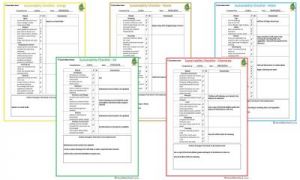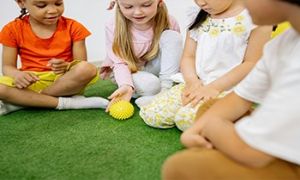This guide distills the heart of the Early Years Learning Framework into clear, actionable reference points for educators. Grounded in evidence and everyday practice, it highlights the guiding principles and intentional actions that support every child’s learning, well-being, and sense of belonging. Whether used in planning, reflection, or team training, these prompts and insights help ensure that pedagogy is not just compliant but deeply connected, culturally responsive, and emotionally attuned.
EYLF Principles—What Guides Us
| Principle | Quick Explanation | Keywords to Embed in Practice |
|---|---|---|
| Secure, Respectful & Reciprocal Relationships | Relationships are foundational for learning. | Trust Comfort • Collaboration • Respect • Attachment |
| Partnerships | Families, educators are central to children's learning. |
Voice • Culture • Welcome • Co-create Share stories |
| Respect for Diversity | Culture, ability, language—all valued. | Acknowledge • Celebrate • Reflect • Affirm |
| Aboriginal and Torres Strait Islander Perspectives | Respectfully integrating Indigenous worldviews, knowledges, cultural protocols, and community voices. | Respect for Country •Elders and community voice •Indigenous knowledges •Language revival |
| Equity, Inclusion and High Expectations | Creating learning environments where every child and educator is valued, supported, and expected to thrive | Anti-bias curriculum •High expectations for all •Diverse learner strengths |
| Sustainability | Fostering environmental, social, and economic sustainability through everyday practice and long-term thinking. | Eco-literacy •Nature pedagogy •Circular thinking •Resource stewardship •Sustainability embedded |
| Critical Reflection and Ongoing Professional Learning | Using intentional reflection to challenge assumptions, improve practice, and support professional growth over time. | Inquiry mindset •Theory-informed reflection •Bias awareness •Practice transformation •Collaborative inquiry |
| Collaborative Leadership and Teamwork | Leading with purpose, trust, and shared responsibility to elevate educator voice, strengthen relationships, and drive change. | •Feedback culture •Strengths-based teamwork •Co-leadership •Empowered educator voice |
EYLF Practices—How We Work
Practice |
Everyday Application |
Embedded Prompts/Examples |
|---|---|---|
| Holistic, Integrated and Interconnected Approaches | See the child as a whole—mind, body, relationships. | “How did this activity support emotional AND social growth?” |
| Responsiveness to Children | Follow their interests, cues, and needs. | “I noticed Kai was fascinated with shadows—let’s explore light!” |
| Play-based Learning And Intentionality | Play is central, purposeful, and open-ended. | “How did this play evolve today?” • “Where did problem-solving emerge?” |
| Intentional Teaching | Be purposeful—ask questions, extend ideas, model thinking. | “Let’s try a prediction before we mix these paints…” |
| Learning Environments | Design flexible, rich spaces that invite exploration. | “What materials prompt curiosity and autonomy today?” |
| Cultural Responsiveness | Embed, respect, and reflect culture every day. | “Whose stories, songs, or rhythms are visible here?” |
| Continuity of Learning & Transitions | Support smooth shifts across settings or routines. | “Did this transition feel safe and empowering for the child?” |
| Assessment And Evaluation For Learning, Development and Wellbeing | Observe, document, interpret, and respond meaningfully. | “What does this moment tell us about their identity as a learner?” |
Principles—Guiding Beliefs
| Principle | Definition | Reflection Prompt |
|---|---|---|
| Secure, respectful & reciprocal relationships | Building trust, empathy, and genuine partnerships with children | How did I show respect and understanding today? |
| Partnerships | Engaging families as co-educators in learning journeys | What family insights did I invite or incorporate? |
| High expectations & equity | Supporting every child to reach their potential, free from bias | Did I challenge stereotypes and encourage each child’s growth? |
| Respect for diversity | Valuing each child’s identity, language, and culture | How did I celebrate individual backgrounds? |
|
Aboriginal and Torres Strait Islander Perspectives |
Respectfully centering First Nations cultures, histories, languages, and ways of knowing within learning environments and pedagogical practice. | How do our relationships with local Elders and communities inform our practice? |
| Equity, Inclusiveness, and High Standards | Ensuring every child, family, and educator feels valued, seen, and supported—while holding high expectations that affirm potential regardless of background, ability, or identity. | Are our environments physically, socially, and emotionally inclusive? |
|
Sustainability |
Embedding ecological, cultural, social, and economic sustainability across daily routines, long-term planning, and community connections. | How do children participate in caring for the environment and each other? |
| Critical Reflection and Ongoing Professional learning | Using reflective practice to confront assumptions, evolve pedagogy, and prioritize growth that is informed by theory, evidence, and lived experience. | What beliefs guide my teaching decisions—and are they still serving children and families today? |
| Collaborative Leadership and Teamwork | Cultivating shared responsibility, voice, and purpose among all team members to drive continuous improvement and deepen trust. | Are all voices—especially marginalised ones—actively listened to and acted on? |
Practices—Effective Actions
| Practice | What It Looks Like | Implementation Prompt |
|---|---|---|
|
Holistic, Integrated and Interconnected Approaches |
Addressing all aspects—physical, social, emotional, and cognitive | How did this activity support multiple areas of growth? |
| Responsiveness to children | Following children’s interests, cues, and emerging needs | How did I respond to a child’s curiosity or emotion? |
|
Play-based Learning And Intentionality |
Facilitating open-ended, child-led play experiences | What opportunities did I provide for exploration and problem-solving? |
| Learning environments | Designing rich, flexible spaces that invite investigation | How does today’s setup spark inquiry and independence? |
| Cultural Responsiveness | Integrating diverse cultures authentically in routines and resources | Whose stories, languages, or traditions are visible and honored? |
| Continuity of learning & transitions | Seamless shifts across routines and settings | How did I support confidence and predictability during transitions? |
|
Assessment And Evaluation For Learning, Development and Wellbeing |
Observing, documenting, and planning based on evidence | What did observations reveal and how will I plan next steps? |
Quick Integration Tips
- Display this cheat sheet in the staff room or planning area for daily prompts.
- Embed the reflection and implementation prompts into lesson plans and journals.
- Link principles and practices to children’s quotes, photos or work samples.
- Collaborate with families by sharing these guides and seeking their insights.
- Use icons or color-coding for each principle and practice to boost recall.
Further Reading
Principles Of The EYLF Version 2.0
Practices Of The EYLF Version 2.0


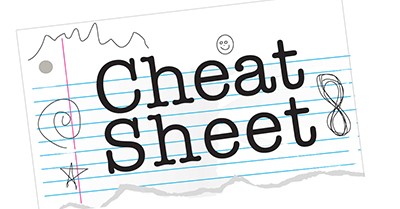




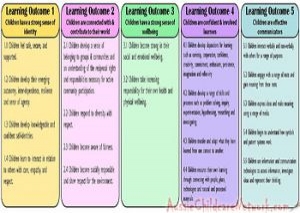 Here is the list of the EYLF Learning Outcomes that you can use as a guide or reference for your documentation and planning. The EYLF
Here is the list of the EYLF Learning Outcomes that you can use as a guide or reference for your documentation and planning. The EYLF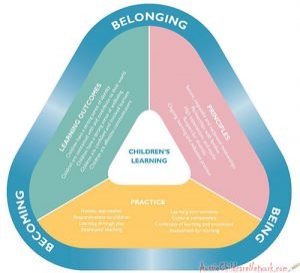 The EYLF is a guide which consists of Principles, Practices and 5 main Learning Outcomes along with each of their sub outcomes, based on identity,
The EYLF is a guide which consists of Principles, Practices and 5 main Learning Outcomes along with each of their sub outcomes, based on identity, This is a guide on How to Write a Learning Story. It provides information on What Is A Learning Story, Writing A Learning Story, Sample
This is a guide on How to Write a Learning Story. It provides information on What Is A Learning Story, Writing A Learning Story, Sample One of the most important types of documentation methods that educators needs to be familiar with are “observations”. Observations are crucial for all early childhood
One of the most important types of documentation methods that educators needs to be familiar with are “observations”. Observations are crucial for all early childhood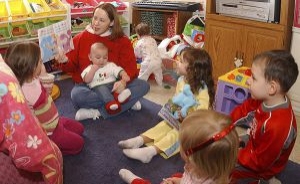 To support children achieve learning outcomes from the EYLF Framework, the following list gives educators examples of how to promote children's learning in each individual
To support children achieve learning outcomes from the EYLF Framework, the following list gives educators examples of how to promote children's learning in each individual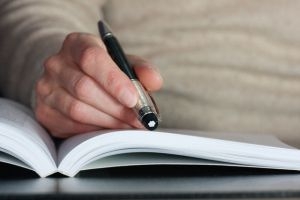 Reflective practice is learning from everyday situations and issues and concerns that arise which form part of our daily routine while working in an early
Reflective practice is learning from everyday situations and issues and concerns that arise which form part of our daily routine while working in an early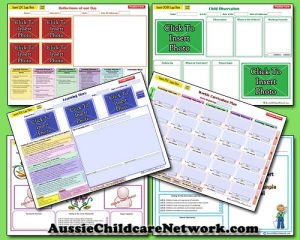 Within Australia, Programming and Planning is reflected and supported by the Early Years Learning Framework. Educators within early childhood settings, use the EYLF to guide
Within Australia, Programming and Planning is reflected and supported by the Early Years Learning Framework. Educators within early childhood settings, use the EYLF to guide When observing children, it's important that we use a range of different observation methods from running records, learning stories to photographs and work samples. Using
When observing children, it's important that we use a range of different observation methods from running records, learning stories to photographs and work samples. Using This is a guide for educators on what to observe under each sub learning outcome from the EYLF Framework, when a child is engaged in
This is a guide for educators on what to observe under each sub learning outcome from the EYLF Framework, when a child is engaged in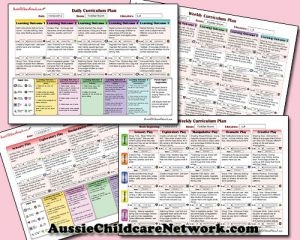 The Early Years Learning Framework describes the curriculum as “all the interactions, experiences, activities, routines and events, planned and unplanned, that occur in an environment
The Early Years Learning Framework describes the curriculum as “all the interactions, experiences, activities, routines and events, planned and unplanned, that occur in an environment
